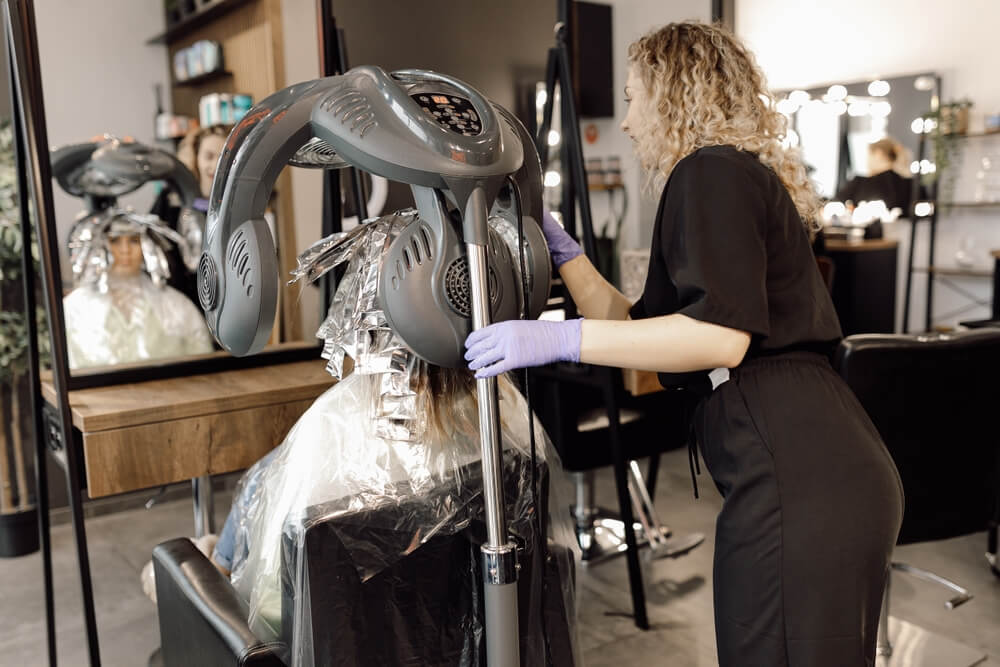Working ergonomically is important for every person. Wherever you work or whatever work you do, it is essential to do it in the right way to avoid complaints, injuries and pain. But the importance and guidelines for ergonomic working vary from sector to sector. We like to explain to you in several blogs what is important for which sector. This time, it is the hairdressing industry's turn.
Why is it so important?
Adopting the right working posture while cutting is incredibly important for a hairdresser. A hairdresser is constantly cutting, blow-drying, styling and caring for clients' hair. As a result, a hairdresser often sits in the same position for a long time, making the same repetitive movements. This greatly increases the risk of physical complaints, such as back pain, neck and shoulder pain, joint pain and even long-term injuries. By investing in ergonomic workplace adjustments, the use of suitable aids and promoting good posture, hairdressers can not only improve their own health and well-being, but also the quality of service to their clients.
The effect of poor work posture on hairdressers
Poor work posture can have unpleasant consequences for hairdressers. Prolonged standing, bending and repetitive movements can lead to physical problems. Poor work posture can lead to chronic back and neck pain, muscle strain, joint problems and even injuries. It is therefore essential for hairdressers to be aware of their posture and take regular breaks, do exercises and apply ergonomic techniques to promote their health and well-being.

The importance of a good chair and shoes for hairdressers
That good working posture is important is self-evident. But please keep in mind the importance of good shoes, either. Because you stand almost all day, your body weight constantly rests on your feet, all day long! Therefore, make sure you wear shoes that offer the right support. Do not wear shoes with heels. You can also choose to wear insoles in your shoes. These insoles not only offer more comfort, but also more support.
Common injuries/health issues
Hairdressers are often at risk of various injuries due to the physical nature of their work. One of the most common injuries is so-called 'hairdresser's eczema', a skin condition caused by exposure to chemicals in hair care products. This irritation can lead to redness, itching and even blisters on the hairdresser's hands and skin. In addition, hairdressers can also suffer from 'Carpal Tunnel Syndrome'. This is a condition where the nerve in the wrist becomes pinched. Hairdressers also often experience back, neck and shoulder pain due to prolonged standing and bending.
Tips to prevent common injuries
Adopt a good posture. A pump chair is mandatory and can be easily adjusted in height. By using this chair, you no longer have to bend down to cut a client. Make sure you can keep your back straight while cutting. Then you can be assured that the chair is at the right height.
Use adjustable instruments
To avoid complaints and injuries, it is not only important that the hairdresser's chair is adjustable. Also, always use an ergonomic saddle stool. This is also called a barber's stool or hairdresser's stool. This saddle stool is adjustable. This makes it easy to adjust your height to that of your client. This ensures that you always have the right posture. Using an adjustable washing unit is also recommended.
Take regular breaks
Taking regular breaks is important in all professions, including hairdressing. As a hairdresser, you stand in the same position for a long time anyway. Try to take a 10-minute break after every hour, by going for a walk.
Use the palm-palm method
For a hairdresser, it is mandatory to have a pump chair in the workplace. This should be high enough so that you can adopt a relaxed working posture. This ensures that the elbows and shoulders hang low. You can keep the upper arms a little lower while cutting and keep the wrists in a neutral position.








